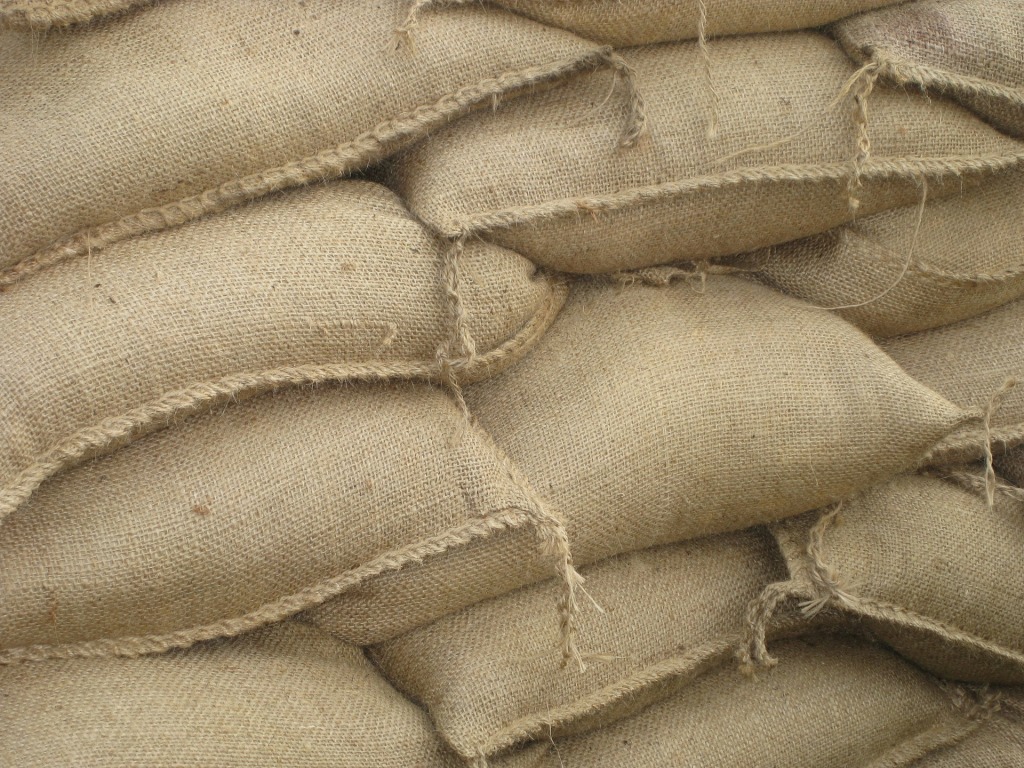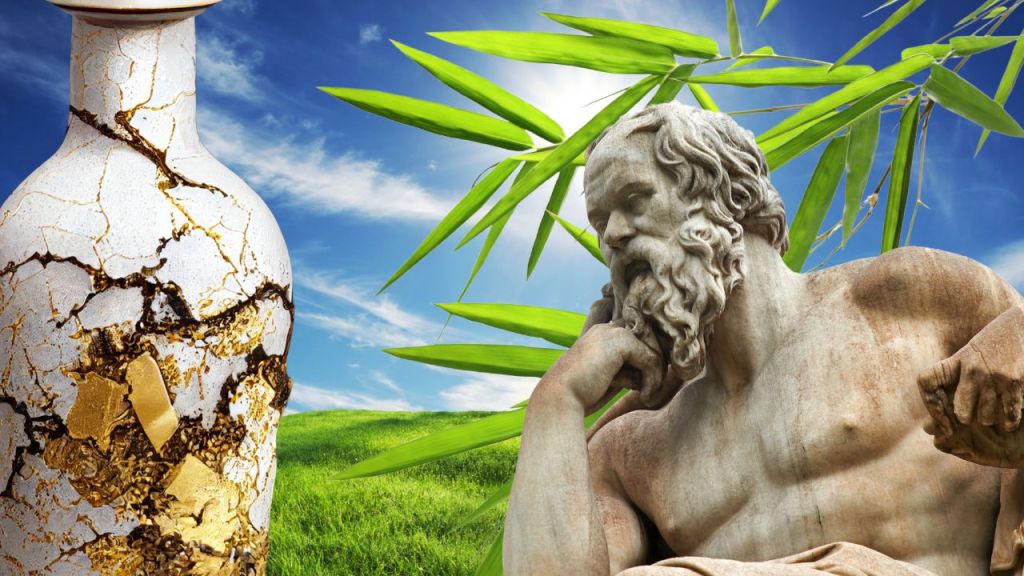Welcome to the world of sustainable and eco-friendly living! As we strive for a greener future, it’s only fair to spotlight an incredible contender in sustainable fibers – jute. This versatile and biodegradable fiber is revolutionizing the textile industry with its unique properties, becoming an exceptional alternative to synthetic materials.
Unsustainable materials often have a negative impact on the environment, contributing to issues such as pollution, deforestation, and climate change. By replacing these materials with more sustainable alternatives, we can reduce our impact on the environment and begin to mitigate these issues.
In an effort to shed some light on more sustainable alternatives, we’ll unveil the wonders of jute. Today, we’ll discuss its origin, characteristics, environmental impact, and potential uses in various industries. Plus, we’ll look at how it compares to other sustainable options. So, are you ready to discover how this fascinating fiber can improve our world?
Let’s get started!
Quick Facts:
- Every part of the jute plant can be utilized for different purposes!
- Jute is the second-most important vegetal fiber after cotton and is even more sustainable.
- The production process of jute has a lesser impact on the environment than many synthetic materials.
What Is Jute Fiber?
Jute, often referred to as the “golden fiber,” is an all-natural vegetable fiber made from the outer stem and skin of the jute plant. This versatile material is prized for its fast-drying properties and exceptional breathability, making it ideal for use in various industries, from textiles to agriculture.
Jute originates from the Bengal region, comprising present-day Bangladesh and India’s West Bengal state. Its cultivation dates back thousands of years, with ancient civilizations utilizing this renewable resource for a multitude of purposes.
Extracting jute fibers entails harvesting the plants at the peak growth stage and then submerging them in water to separate the fibrous strands from other plant components. Once separated, these golden fibers can be spun into threads or yarns that form strong fabrics perfect for countless applications.
As the second most important vegetal fiber after cotton, jute has solidified its reputation as a sustainable alternative with lower environmental impact than conventional fibers like synthetic or cotton.
Not only does jute require less water during cultivation than cotton, but also significantly reduces its carbon footprint due to minimal maintenance requirements throughout production processes. The eco-friendly nature of jute aligns with an increasing global focus on harnessing natural resources responsibly and prioritizing long-term sustainability over short-term conveniences provided by synthetic materials, which come at a heavy cost to our environment.

Properties and Characteristics of Jute Fiber
Jute has high tensile strength, low extensibility, and excellent moisture retention properties. It’s also breathable, making it perfect for hot climates. Jute fibers are naturally light brown in color but can be dyed to produce various colors.
Jute’s softness also makes it ideal for apparel products such as clothing and bags. This versatile fiber can be blended with other fabrics to create durable clothing items or used on its own for softer materials like linens or loose-fitting shirts. Additionally, jute’s ability to retain dyes makes it great for creating vibrant patterns and designs.
One of the unique properties of jute is its resistance to UV rays which makes the fabric less prone to fading over time when exposed to sunlight. Because jute is a plant-based material, it doesn’t contain harmful chemicals or synthetic substances typically found in many textiles produced today, making it an ideal choice for eco-friendly consumers looking for alternative options with a lower carbon footprint than traditional synthetics like polyester or nylon.
Benefits of Using Jute Fiber
Jute fiber is a sustainable and biodegradable material that offers numerous benefits to the green movement. Let’s check out some of Jute’s unique benefits.
1. Eco-Friendly: Jute is a renewable resource that requires less water and pesticides than cotton.
2. Biodegradable: Jute is 100% biodegradable, compostable, and recyclable.
3. Moisture Retention: Jute can retain moisture, making it ideal for agricultural products such as bags for coffee beans or rice.
4. Fast Drying: Jute fabrics dry quickly, making them suitable for apparel production in hot and humid climates.
5. Breathable Materials: Jute fabrics are breathable, providing comfort to wearers.
6. Affordable Fabric: Jute is affordable compared to other eco-friendly options like hemp or linen.
7. Versatile Fiber: Every part of the jute plant can be utilized for different purposes, from textiles to building materials.
8. Positive Impact on Farmers and Producers: The cultivation and production of jute offer economic benefits to farmers and producers in developing countries.
9. Recyclable Product: Jute products can easily be recycled into new items or used as organic fertilization.
10. Sustainable Fashion: Using jute fibers in fashion creates sustainable clothing options that have less environmental impact than synthetic fibers like polyester or nylon.
Sustainability of Jute Fiber
Jute fiber is one of the most sustainable and eco-friendly materials available due to its biodegradability, cultivation practices, and minimal environmental impact compared to synthetic fibers.
Biodegradability and Eco-friendliness
The jute plant’s natural ability to absorb carbon dioxide during its growth minimizes the environmental impact of jute production. Additionally, as a compostable material, jute can be transformed into organic fertilizers when decomposing.
Aside from being an environmentally friendly option, using jute has economic benefits too. Jute cultivation creates employment opportunities and income for farmers in developing countries where it’s mainly grown. It also contributes to the development of rural communities by promoting more environmentally conscious practices, such as organic farming methods needed for growing jute sustainably.
With these advantages, it’s no surprise that designers are increasingly turning to this versatile natural material as they seek ethical ways to reduce their carbon footprint while still creating beautiful and functional products for consumers who care about sustainability!
Cultivation and Production Practices
Jute plants are usually grown in tropical areas like Bangladesh, India, and China. These plants require minimal water and pesticide compared to other crops like cotton or synthetic fibers, making them an ideal choice for sustainable farming.
After harvesting the jute stems, they are soaked in water to allow the fibrous material to separate from the plant’s stem. Then these fibers undergo a series of washing and drying processes before being spun into yarns that can be used to manufacture textiles, ropes, sacks & bags for packaging purposes.
Additionally, all parts of the jute plant have different uses: The leaves provide natural mulch, while waste materials from jute fiber can be recycled as organic fertilizers or transformed into bioplastics with relative ease. Cultivation of jute provides employment opportunities for rural communities in developing countries while maintaining environmental balance with land usage techniques such as intercropping alongside food crops.
Environmental Impact of Jute Fiber
The cultivation of jute requires far less water and chemical fertilizers than cotton, making it one of the most sustainable natural fibers available. Additionally, the manufacturing process for jute fiber is generally less resource-intensive than many other textile production methods.
Unlike many synthetic fabrics that release microplastics when washed, jute is biodegradable and decomposes naturally without polluting our oceans or landfills. When discarded after use, jute can also be composted to help improve soil quality and reduce waste. By choosing sustainable materials like jute over conventional options, we can all contribute to a greener future for our planet.
Comparison With Other Fibers
Let’s check out some of the key differences and advantages of jute fiber compared to other materials.
| Fiber | Sustainability | Water Usage | Biodegradability | Affinity to Moisture |
| Jute | Highly sustainable, eco-friendly and requires less maintenance | Less water usage compared to cotton | Biodegradable, compostable, and recyclable | High affinity to moisture but dries quickly |
| Cotton | Less sustainable than jute, requires more maintenance | High water usage | Biodegradable and compostable | Moisture-wicking but takes longer to dry than jute |
| Polyester | Not sustainable, made from non-renewable resources | Not applicable | Non-biodegradable | Water repellent, less prone to moisture issues |
| Bamboo | Considered sustainable, but some concerns about deforestation and chemicals used in production | Minimal water usage | Biodegradable and compostable | Reasonable moisture absorption capabilities |
Potential Uses of Jute Fiber
Jute fibers can be used in a variety of ways, from the textile industry and construction to packaging and agriculture.
Textile Industry And Fashion
Jute fiber’s natural texture and durability make it an excellent alternative for the textile industry. Here are some ways jute fibers can be used in the fashion world:
- Jute fabric can be spun into fine yarns that create a breathable, lightweight material perfect for hot climates.
- The rough and rustic look of jute fits well with bohemian or earthy styles.
- Jute bags and totes are gaining popularity as eco-friendly alternatives to plastic bags.
- The versatility of the jute fiber makes it ideal for making various garments such as dresses, blouses, skirts, and pants.
- Jute is often used in home decor items like rugs, curtains, table runners, and wall hangings because of its natural color and texture.
Not only does using jute reduce environmental impact compared to traditional synthetic textiles, but it also supports sustainable farming practices supporting small farmers who rely on this crop for their livelihoods.
Construction Industry and Home Decor
Jute fiber is one of the most versatile materials that can be used in the construction industry and home decor.
- Jute panels and boards can replace traditional plywood or particleboard.
- Jute-based insulation material is more sustainable than fiberglass.
- Carpets, rugs, and curtains made from natural jute fibers can improve indoor air quality.
- Jute bags are perfect for storing construction materials or as an alternative to plastic bags.
- Jute ropes are excellent for outdoor home decor like swings, hammocks, or garden trellises.
Incorporating jute into these industries not only provides environmentally friendly options but also supports local farmers and producers who cultivate the crop, helping them create a sustainable livelihood.
With its versatility and durability, jute proves to be a practical and affordable option for those looking to live greener lives while still maintaining style and comfort in their homes or workplaces.

Packaging And Agriculture
Packaging and agriculture are two industries that can benefit greatly from using jute fiber. Here are some ways in which jute can be utilized in these sectors:
Packaging
Jute bags have become popular as an alternative to plastic bags due to their biodegradability and recyclability. Jute sacks are commonly used for packaging various agricultural products such as rice, wheat, coffee, and cocoa. Due to their durability, jute bags can be reused multiple times, making them a cost-effective option.
Agriculture
Jute is commonly used for soil erosion control because it traps moisture and protects the soil. The leftover plant material after fiber extraction can be used as organic fertilizer or animal feed. Farmers can benefit from growing jute as it requires less water and maintenance than cotton or other crops. Jute cultivation also has a lower carbon footprint than other fibers due to its low energy consumption during production.
Automotive Industry
Jute fiber can also be utilized in the automotive industry as a sustainable and eco-friendly material. Here are some applications for jute fiber in cars:
1. Interior Panels: Jute fiber can be used to make door panels, center consoles, and other interior components of a car.
2. Upholstery: Jute fabric is an excellent material for seat covers, floor mats, and other upholstery due to its durability and moisture resistance.
3. Sound Insulation: Jute fibers can help reduce noise in a car’s cabin by acting as a sound-absorbing material.
4. Trunk Liners: The strong and lightweight nature of jute makes it an ideal material for trunk liners that protect the carpeting underneath.
5. Environmental Impact: Using jute fiber in the automotive industry reduces the carbon footprint and contributes towards creating a more sustainable environment.
6. Cost-Effective: Using jute fibers for automotive parts is cost-effective compared to synthetic materials because they are abundant, easy to produce, and biodegradable.
7. Versatile Material: Jute has multiple uses, not just in the automotive industry but also in construction, agriculture, packaging, fashion, and more.
By incorporating jute fiber into cars’ interiors, manufacturers can create eco-friendly vehicles that meet sustainability standards while still providing high-quality performance to consumers.
Innovation and Research Opportunities
Innovation and research opportunities abound in the world of jute fiber. The possibilities are endless, from developing new applications for jute in construction materials to creating bioplastics from jute fibers. Scientists and entrepreneurs alike are exploring ways to make jute even more sustainable and eco-friendly.
The potential for innovative uses of jute is vast, with many companies investing heavily in finding new ways to use this renewable resource. Whether it’s developing affordable fabrics that can withstand hot and humid climates or creating packaging materials that are both recyclable and compostable, there is no shortage of exciting developments in the works.
Research into natural dyes made from jute is also gaining momentum as consumers demand more ethical products with a lower carbon footprint. As we embrace a circular economy where resources are reused again and again, innovative uses of natural fibers like jute will become increasingly important.
Frequently Asked Questions
Here are a few answers to the most commonly asked questions about jute.
Can jute fabric withstand everyday wear and tear?
Jute fabric has been known to hold up well under moderate amounts of daily use. However, since it’s not as commonly used in clothing textiles as other natural/synthetic fabrics , there may not be significant tests conducted publicly outlining durability claims across all types of sportswear/apparel items just yet (i.e., active wear vs. casual styles).
Are jute and burlap the same thing?
Jute and burlap are related, but not exactly the same thing. Jute is a natural plant fiber commonly used to make various products, including rope, twine, and fabrics. Burlap, on the other hand, is a coarse, plain-woven fabric typically made from jute fibers.
So while burlap can be made from jute, the two terms are not interchangeable. Jute refers specifically to the plant fiber, while burlap is a type of fabric that can be made from various fibers, including jute.
Is jute more expensive than conventional synthetic fibers?
The cost of jute fiber can vary depending on a number of factors, including the quality, availability, and demand for the fiber. In general, jute is often more expensive than conventional synthetic fibers like polyester or nylon.
Jute requires more processing than synthetic fibers. It must be harvested, retted, and spun into yarn before it can be used in manufacturing. This process can be time-consuming and labor-intensive, which can contribute to the higher cost of jute products.
Is jute stronger than cotton?
Yes, jute is generally stronger than cotton. Jute fibers are longer and more robust than cotton fibers, which makes jute a more durable and hard-wearing material. However, the strength of jute and cotton can vary depending on the quality and processing of the fibers. For example, a high-quality, tightly-spun cotton thread may be stronger than lower-quality jute fibers.
So, Does the Potential of Jute Smash Your Expectations?
Jute has proven to be more than just a fiber but a sustainable and biodegradable solution for many industries. Its versatility and durability make it an ideal alternative to synthetic materials that have long-lasting impacts on the environment.
The benefits of using jute go beyond reducing carbon footprint as they also provide economic advantages for farmers and producers. As we move towards a circular economy, jute is an essential part of green material development.
Therefore, investing in jute is ethical and economical since it presents opportunities for innovation through research and experimentation with its many potential uses in construction, packaging, agriculture, and textile production. Let’s embrace the future of sustainability by incorporating jute into our daily lives!






Leave a comment